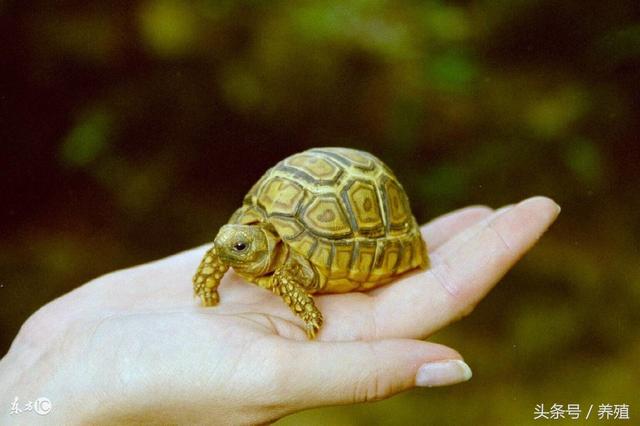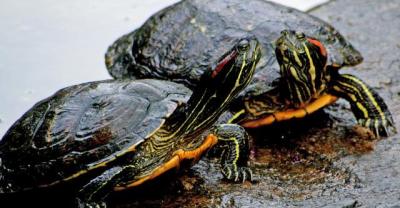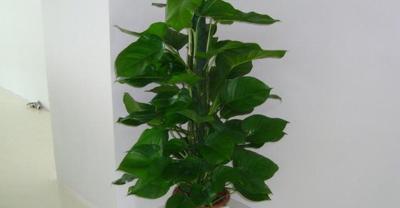Four key points of overwintering management of turtle breeding, the market potential of special pets is great.
The basic principle of tortoise overwintering management is to do a good job of anti-freezing and warmth.
1. Overwintering naturally
The tortoise begins to hibernate below the water temperature of 15 ℃ and does not eat. It is easier for turtles to survive the winter. Check the pond in the morning in winter. Turtle-fish ponds are also managed.
Raising tortoises: characteristics, value and key points of breeding techniques of crocodile turtles
2. Cellar overwintering
Choose a leeward direction, 30 centimeters below the ground to dig a hole, the size depends on the number of turtles, turtles can overlap each other, but should not be piled too thick. Protrude a vent pipe from the hole, with the outer mouth facing south. Seal the hole with a board or cement board, pile it up and cover it with straw. Check every 20 days, if the temperature in the cave is more than 13 ℃, the heat preservation on the hole can be reduced; if the temperature in the cave is less than 2 ℃, thicken the heat preservation. This method of overwintering is simple and safe, and there is humidity in the cave, so there is no need to drench water. By the same token, caves and air-raid shelters can also be used to survive the winter.

Turtle culture
3. Indoor overwintering
According to the indomitable vitality and resistance of turtles, they can survive the winter naturally indoors. The specific measures are as follows: when winter comes every year and the water temperature drops below 13 ℃, the turtles are picked up from the pond and placed in a quiet and empty room. The turtles are stacked with 2-3 layers, covered with 30 cm of warm straw that has been soaked for half a day, and watered once again, sealing the doors and windows and blocking the light. After that, the turtles are drenched every other week or so to keep the straw from drying. According to records, when the indoor temperature is below 0 ℃, it is also very safe, with a survival rate of more than 98%, and will not affect reproduction in the following year. The biggest advantage of this method is that it can be taken care of at any time and can accommodate a large number of turtle species to survive the winter.

Turtle breeding
4. Cylinders and boxes are insulated to survive the winter
Put the turtle in the tank or box, cover it with a certain air vent, add some wet cloth or wet sponge to the tortoise and check it every 10 to 15 days to survive the winter without letting it dry. This method is suitable for tortoises (dry turtles), semi-aquatic turtles and small and medium-sized turtles to survive the winter. As long as the temperature in the tank is not lower than 0 ℃ (tropical turtles are not less than 5 ℃), most turtles can survive the winter safely.
In addition, small-scale family turtle overwintering management, turtles can be put in a water container, put indoors, keep more than 0 ℃ can be safe through the winter, stocking density can also be more than twice as high as usual, which is beneficial to raise a certain temperature. Such as outdoor courtyard micro-pool turtle culture, can be covered with plastic film on the pool, do not freeze the pool water is a very safe way to survive the winter. Properly deepening the water level also has the effect of heat preservation. The easiest way is to put some Styrofoam in the small pool and put straw on it to make the tortoise survive the winter safely.

Turtle culture
In a word, the main management of tortoise overwintering is based on temperature, and it is best to keep it within the range of 5-13 ℃, not to cause excessive energy consumption and death in spring due to excessive energy consumption in the long-term semi-awakening state of 13-14 ℃.
Friends who are interested in aquaculture can pay attention to: aquaculture, there are wonderful breeding information and technical articles to share every day. Email address: [email protected].
- Prev

Goat farming, what you should do well in spring-deworming
Deworming is the main measure to prevent parasitic diseases of goats, how to deworming effectively and thoroughly, the period and methods are the key. After a few days, the earth came back.
- Next

Friends who raise dollfish, see how to design the dollfish breeding base.
According to the unique ecological habits of baby fish, the living habits and ecological environment suitable for the growth and development of baby fish should be fully considered in the design of culture pond. The pool wall.
Related
- On the eggshell is a badge full of pride. British Poultry Egg Market and Consumer observation
- British study: 72% of Britons are willing to buy native eggs raised by insects
- Guidelines for friendly egg production revised the increase of space in chicken sheds can not be forced to change feathers and lay eggs.
- Risk of delay in customs clearance Australia suspends lobster exports to China
- Pig semen-the Vector of virus Transmission (4)
- Pig semen-the Vector of virus Transmission (3)
- Five common causes of difficult control of classical swine fever in clinic and their countermeasures
- Foot-and-mouth disease is the most effective way to prevent it!
- PED is the number one killer of piglets and has to be guarded against in autumn and winter.
- What is "yellow fat pig"? Have you ever heard the pig collector talk about "yellow fat pig"?

